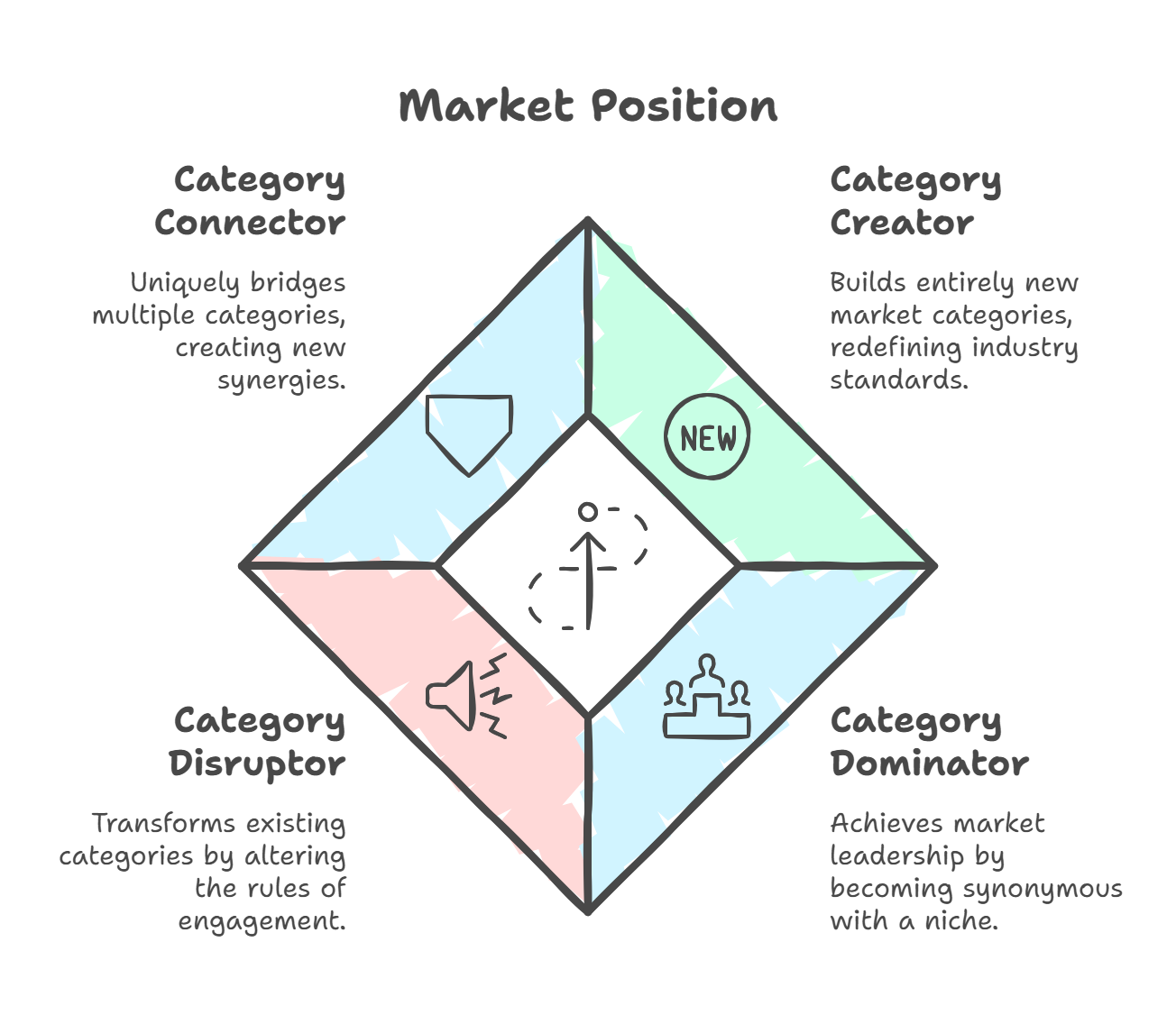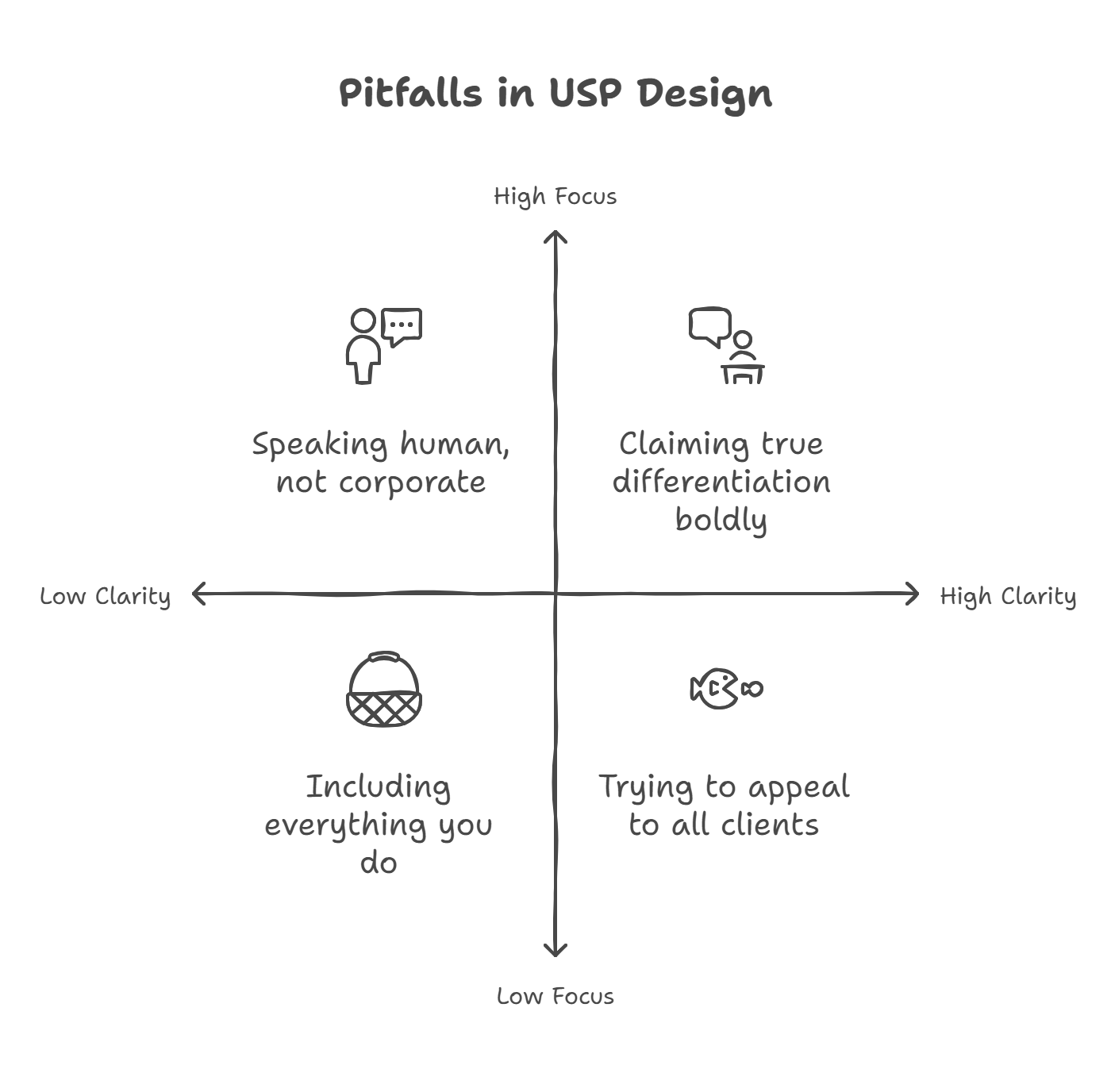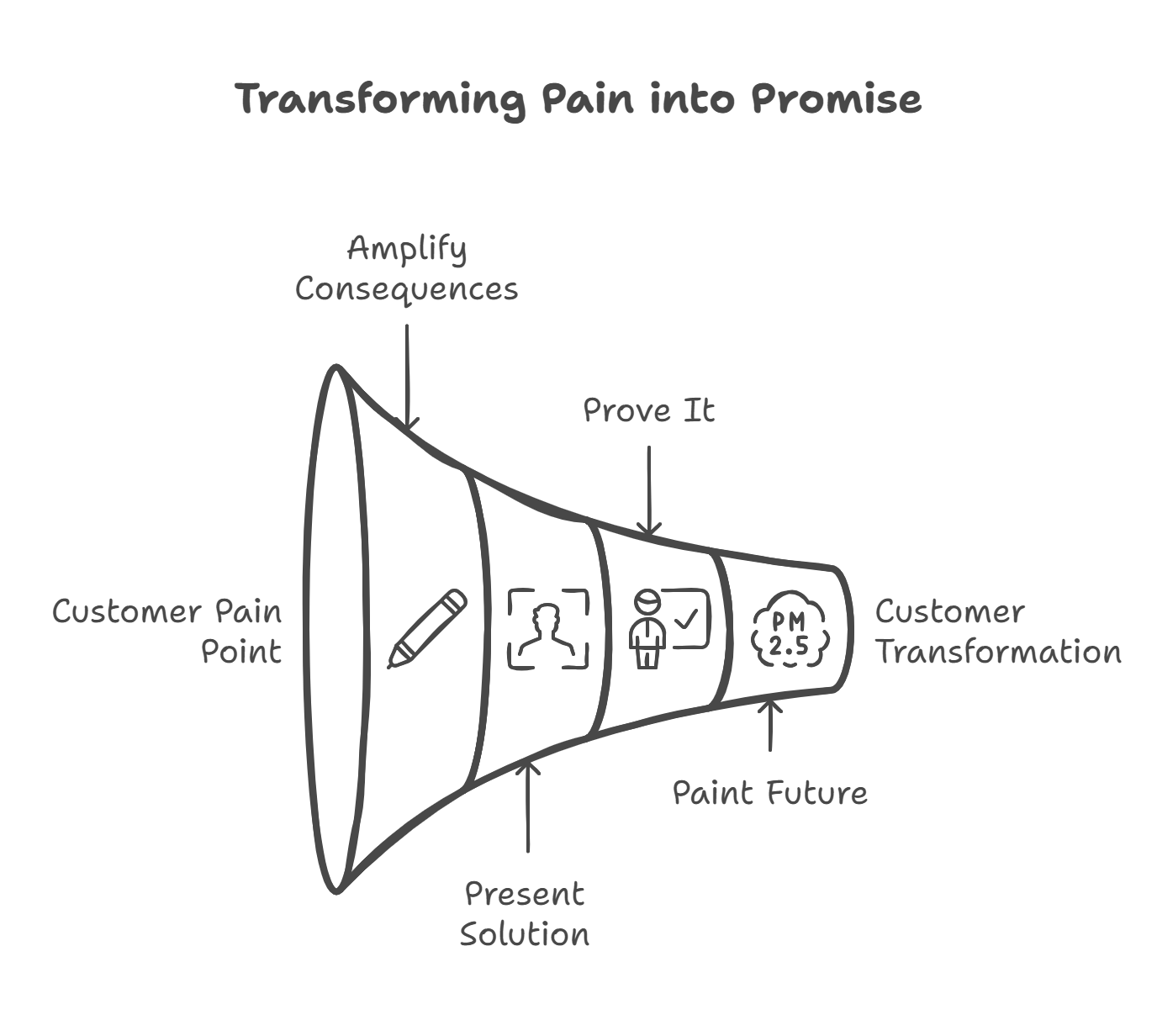From Bland to Bold: The Art of Standing Out in Business
The Expensive Comfort of Mediocrity
Mediocrity – that cozy sweater of the business world. It’s comfortable, familiar, and slowly strangling your business to death.
Let’s talk about your current value proposition. You know, that masterpiece of mundane messaging that’s probably sitting on your website right now, crafted by a committee and polished to perfection until it says absolutely nothing to absolutely everyone. It’s the business equivalent of a politician’s promise – vaguely appealing, entirely forgettable, and trusted by no one.
But hey, at least you’re in good company, right? You and thousands of other businesses all huddled together in the lukewarm pool of mediocrity, splashing around with your “innovative solutions” and “customer-centric approaches.” It’s getting pretty crowded there, isn’t it? It’s so crowded that your potential customers can’t tell the difference between you and the guy next door who’s copying your copying of someone else’s copy.
The Real Cost of Playing it Safe
Here’s what mediocrity is really costing you:
- Your best potential clients are walking right past you to work with someone who has the courage to stand for something. Being a “generalist” projects a generic approach to solving specific problems. Solutions are seldom sufficient and appropriate as they lack expertise and depth.
- Your margins are shrinking faster than a chocolate bar in the desert because you compete on price instead of value. It’s a one-way street to become a commodity, and I bet my last $ there would always be somebody willing to do it cheaper.
- Your team is slowly losing their souls in meetings about meetings, discussing how to be “best in class” while being indistinguishable from the rest of the class. When you can’t clearly articulate “that special ingredient” in your “own house, ” it would be impossible to project it to your market, investors, and stakeholders.
- Your market position is about as memorable as what you had for lunch three weeks ago. Honestly, could you name three boring things worth remembering?
And the kicker? You’re paying a premium price for this mediocrity. Every bland marketing campaign, every generic sales pitch, every forgettable customer interaction – they’re all buying you a first-class ticket to Irrelevanceville. The population is growing every day.
The Bright Side of This Dark Picture
But here’s the good news (yes, there is good news, and no, it’s not that you saved money on your car insurance): The very fact that mediocrity is so prevalent makes being remarkable easier than ever. When everyone else is zigging towards “industry-leading solutions” and “cutting-edge technology,” even a modest zag can make you stand out like a peacock at a pigeon convention.
That’s where this guide comes in. We’re about to transform your value proposition from something that ChatGPT could have written on a bad day into a powerful statement that makes your competitors nervous and your ideal clients lean in closer to their screens.
Are you ready to leave the lukewarm pool of mediocrity? Good. Let’s make some waves.
Why Most Value Propositions Fail
Think about it. When was the last time you read a company’s value proposition and thought, “Wow, that just changed my life!”? Exactly. Never. Here’s why:
- They’re written to please everyone (and thus excite no one)
- They focus on features instead of transformation (and who cares???)
- They blend in like a penguin at a penguin convention (easily replaceable in the blink of an eye)
- They’re so generic they could apply to any business in any industry (generic = “me too” = doesn’t matter)
- They’re written by a committee (because that always works out well and because that is a safe thing to do. It belongs to everybody, making no one responsible for the outcome)
The Shift from Commodity to Preeminence
Stop Being a Commodity (Unless You Enjoy Racing to the Bottom)
Here’s a radical thought: What if instead of trying to be all things to all people, you became THE thing to YOUR people? Your value proposition shouldn’t be a safety net; it should be a trampoline that launches you into a category of one.
The Preeminence Principle
Your value proposition must position you as the only logical choice in your market. Not the cheapest. Not the fastest. The only one worth considering.
(following Jay’s principles – Jay Abraham – Strategy of Preeminence)
Your VP should act as a protective shield against competitors who communicate that a head-on collision with your business will ultimately benefit you. Think of it this way: a killer Value Proposition is like a “Keep Out” sign for your competitors. It’s basically saying, “Hey, messing with me is a bad idea. You’ll lose, and I’ll come out on top even stronger.”
Creating Your Purple Cow Value Proposition (following Seth’s principles – Seth Godin – Purple Cow)
Step 1: Define Your Category
- Don’t fit in; create your own box (similar to Blue Ocean Strategy). Look for untapped opportunities where competition is irrelevant and make it your domain.
- If your competitors could easily claim your value proposition, start over. Instead, aim for longevity and a hard-to-replicate advantage.
- Be the first, best, or only one who does what you do. This could be challenging, but if you can spot the opportunity, go for it without hesitation.
Step 2: Identify Your Dramatic Difference
Ask yourself:
- What makes you meaningfully unique?
- What would make competitors nervous?
- What would make prospects’ eyes widen?
Step 3: Focus on Transformation because everyone else is going for Improvement
Your value proposition should answer:
- What profound change do you create?
- What pain do you eliminate?
- What opportunity do you unlock?
The Bold Value Proposition Framework
State the Pain (Make it visceral)
Amplify the Consequences (What happens if nothing changes?)
Present Your Unique Solution (Why you’re different)
Prove it (Evidence that you deliver); NO BS is allowed. State the facts.
Paint the Future (Show them the promised land)
Examples of Transformation
Check these examples and see the difference.
From BLAND:
“We provide innovative business solutions for optimising operational efficiency.” (Excuse us while we yawn). This is what I meant by “generic in essence” or a “templated VP”. It Excites very few for even shorter periods and never crosses our minds again.
To BOLD:
“We turn chaotic businesses into profit machines in 90 days or less – guaranteed. While your competitors are still having meetings about meetings, you’ll have meetings about managing growth, investments and placing your resources to work for you 24/7, even if you are not present.”
Strategic Application: From Theory to Practice
Let’s explore some proven strategies to clarify your value proposition.
The Preeminence Position Matrix
Choose your strategic position based on these four dimensions:
1. Market Position
- Category Creator: Build an entirely new category (Think: Uber didn’t improve taxis; they created ride-sharing)
- Category Dominator: Own a specific niche so wholly that you become synonymous with it
- Category Disruptor: Transform an existing category by changing the rules of engagement
- Category Connector: Bridge multiple categories in a unique way

Clarifying Market Position and Value Proposition
2. Value Amplification Strategies
The Inverse Model
- What is everyone else promising? —-> Promise the opposite or drastically better
- What does everyone avoid?—-> Make it your strength or pleasure
- What’s considered impossible?—-> Make it your standard and your DNA
The Multiplier Effect
- Identify standard industry metrics
- Promise to multiply them (2x, 5x, 10x)
- Back it with a concrete methodology (the process must exist; you can’t fake it till you make it)
The Elimination Play
- List major industry pain points
- Promise to eliminate the biggest one
- Build your entire proposition around this
Positioning Archetypes
Choose one or combine elements to create your unique position:
1. The Revolutionary
- “We’re here to completely transform how [industry] works.”
- Best for: Market leaders, innovators, category creators
- Example: “We don’t improve accounting; we eliminate it entirely”
2. The Specialist
- “We’re the only ones who exclusively focus on [specific niche].”
- Best for: Niche players, boutique firms
- Example: “The only consulting firm exclusively serving left-handed entrepreneurs”
3. The Iconoclast
- “Everything you know about [industry] is wrong, and here’s why.”
- Best for: Disruptors, challengers
- Example: “Forget everything you know about sales training”
4. The Guarantor
- “We promise specific results, guaranteed”
- Best for: Established players with proven systems
- Example: “Double your revenue in 180 days, or it’s free”
The Strategic Clarity Framework
Step 1: Define Your “Only”
Complete this sentence: “We are the only company that…”
- Must be true
- Must be provable
- Must matter to clients
Step 2: Identify Your “Because”
“We can make this claim because…”
- List your unique methodologies
- Detail your proprietary systems
- Outline your exclusive resources
Step 3: Quantify Your Impact
“This matters because it means…”
- Specific results clients can expect
- Timeframe for achieving results
- Clear contrast with alternatives
Implementation Battleplan
Phase 1: Discovery
- Map current market positions
- Identify uncontested space
- List unique capabilities
- Document client pain points
Phase 2: Development
- Craft initial positioning statements
- Test with trusted clients
- Gather feedback and refine
- Develop supporting evidence
Phase 3: Deployment
- Train team on the new positioning
- Update all marketing materials
- Brief key stakeholders
- Launch internal adoption campaign
The Bold Value Proposition Checklist
Strategic Elements:
- Does it make timid people uncomfortable?
- Would your competitors be afraid to make the same claim?
- Can you deliver on it 100% of the time?
- Does it speak to a specific pain point?
- Would anyone tattoo it on themselves? (Okay, maybe not, but they should want to ?)
Tactical Elements:
- Is it memorable enough to quote?
- Can it be understood by a 12-year-old?
- Does it pass the “cocktail party test”? (Can you say it with pride at a social gathering?)
- Would it make a good headline?
- Does it create FOMO in your target market?
Execution Elements:
- Have you identified metrics to back your claims?
- Is your team aligned and capable of delivering?
- Have you created systems to deliver on your promise consistently?
- Do you have case studies that demonstrate your claims?
- Have you tested it with real prospects?
Common Pitfalls to Avoid When Designing Unique USP
Now that you’re ready to transform your value proposition from wallpaper into a wow factor let’s talk about the landmines waiting to blow up your best intentions. Here’s the thing: Creating a bold value proposition isn’t just about knowing what to do – it’s about knowing what traps to avoid. Think of these as the business equivalent of those embarrassing high school photos that keep returning to haunt you on social media.
The path from bland to bold is littered with the remains of well-intentioned value propositions that fell into these traps. Some tried so hard to be everything that they ended up being nothing. Others got lost in a jungle of jargon so dense that even their creators couldn’t find their way out. But fear not – we’re about to spotlight these pitfalls so you can leap over them with the grace of a caffeinated gazelle.
Let’s pinpoint some of the most common problems and issues:
The Kitchen Sink Syndrome
- Trying to include everything you do. Don’t overcomplicate, KISS (keep it simple stupid)
- Solution: Focus on your most compelling difference (or at least where you can win it)
The Comparison Trap
- Defining yourself by what you’re not. (Others do this, but we are not like them. And this is why what we do matters to you)
- Solution: Stand for something, not against something
The Jargon Jungle
- Using industry buzzwords to sound important (this is my favourite; don’t use words if they don’t fit in or add value)
- Solution: Speak human, not corporate ( have an honest one-on-one conversation instead, human, caring and specific)
The Modesty Mistake
- Underselling your true differentiation (you must win it 2 times before, once in your head, once with your people before you go further).
- Solution: If it’s true, claim it boldly
The Everything-to-Everyone Error
- Trying to appeal to all possible clients ( puls and a chequebook is just fine?)
- Solution: Be polarising to be assertive (or inch wide mile deep vs mile wide inch deep)

- How to design and articulate USP that stands out.
The Call to Arms
Your value proposition isn’t just some words on your website. It’s your battle cry. It’s your stake in the ground. It’s your way of telling the world, “This is who we are, this is what we believe, and this is why we matter.”
Stop playing it safe. Stop trying to please everyone. Start being the purple cow in a field of beige cattle.
Final Thoughts: The Cost of Mediocrity
Every day you continue with a mediocre value proposition is another day your ideal clients spend with your competitors. Every moment you waste trying to appeal to everyone is a moment you don’t connect deeply with anyone.
The market doesn’t need another safe player. It needs leaders willing to stand for something meaningful, even if that means standing apart from the crowd.
Your Next Steps
Tear apart your current value proposition
Be honest about what makes you truly different
Write something that makes your lawyers nervous
Test it with your best clients
If no one objects to it, it’s probably not bold enough
Remember: In a world of boring, safe choices, the bold one wins.
Now, go forth and be remarkable.
P.S. If reading this report didn’t make you at least slightly uncomfortable, you probably need to reread it. Discomfort is where growth happens.


